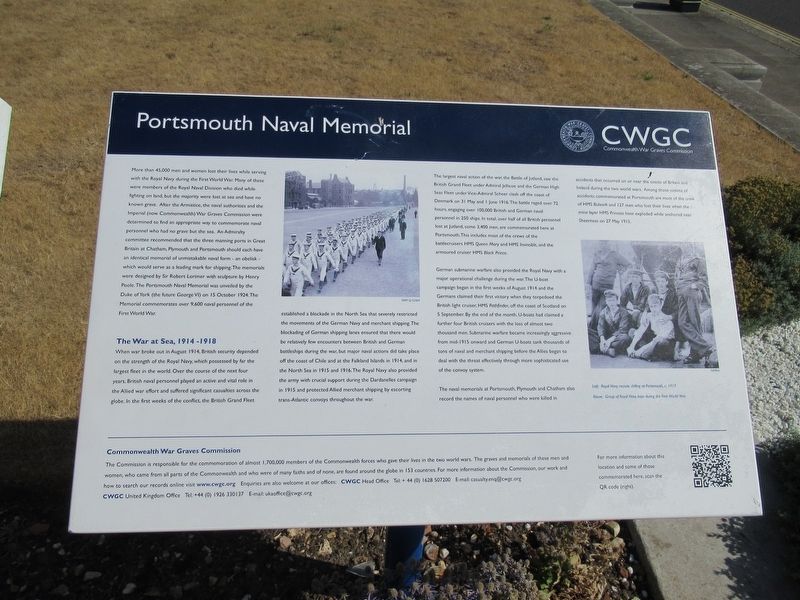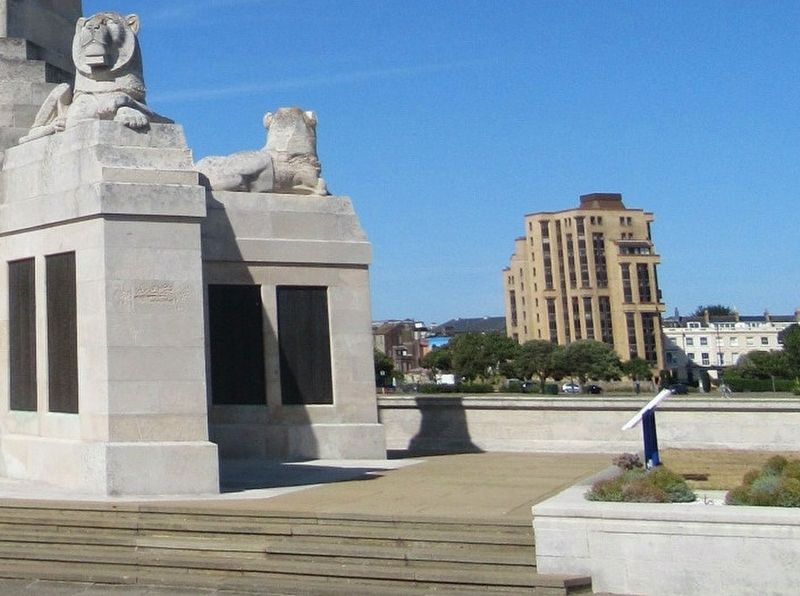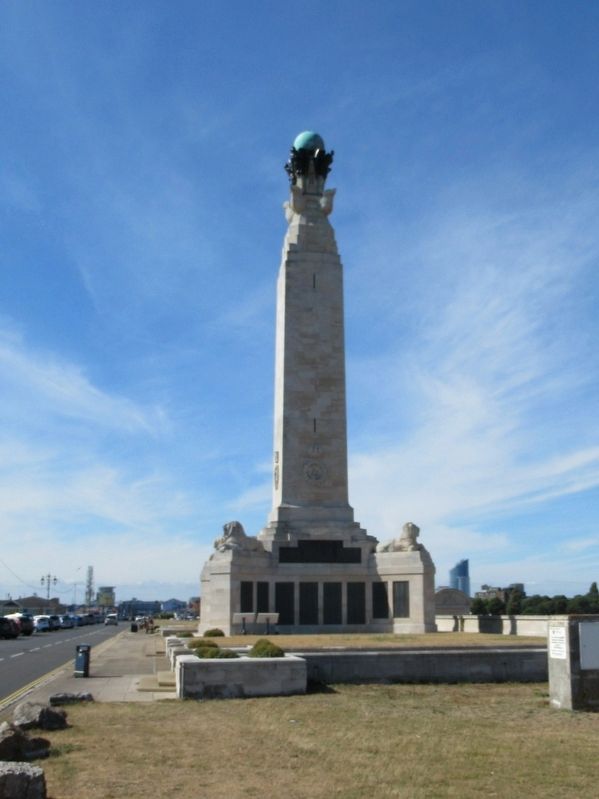Portsmouth, England, United Kingdom — Northwestern Europe (the British Isles)
Portsmouth Naval Memorial
More than 45,000 men and women lost their lives while serving with the Royal Navy during the First World War. Many of these were members of the Royal Naval Division who died while fighting on land, but the majority were lost at sea and have no known grave. After the Armistice, the naval authorities and the Imperial (now Commonwealth) War Graves Commission were determined to find an appropriate way to commemorate personnel who had no grave but the sea. An Admiralty naval committee recommended that the three manning ports in Great Britain at Chatham, Plymouth and Portsmouth should each have an identical memorial of unmistakable naval form - an obelisk - which would serve as a leading mark for shipping. The memorials were designed by Sir Robert Lorimer with sculpture by Henry Poole. The Portsmouth Naval Memorial was unveiled by the Duke of York (the future George VI) on 15 October 1924. The Memorial commemorates over 9,600 naval personnel of the First World War.
The War at Sea, 1914-1918
When war broke out in August 1914, British security depended on the strength of the Royal Navy, which possessed by far the largest fleet in the world. Over the course of the next four years, British naval personnel played an active and vital role in the Allied war effort and suffered significant casualties across the globe. In the first weeks of the conflict, the British Grand Fleet established a blockade in the North Sea that severely restricted the movements of the German Navy and merchant shipping. The blockading of German shipping lanes ensured that there would be relatively few encounters between British and German battleships during the war, but major naval actions did take place off the coast of Chile and at the Falkland Islands in 1914, and in the North Sea in 1915 and 1916. The Royal Navy also provided the army with crucial support during the Dardanelles campaign in 1915 and protected Allied merchant shipping by escorting trans-Atlantic convoys throughout the war.
The largest naval action of the war, the Battle of Jutland, saw the British Grand Fleet under Admiral Jellicoe and the German High Seas Fleet under Vice-Admiral Scheer clash off the coast of Denmark on 31 May and 1 June 1916. The battle raged over 72 hours, engaging over 100,000 British and German naval personnel in 250 ships. In total, over half of all British personnel lost at Jutland, some 3,400 men, are commemorated here at Portsmouth. This includes most of the crews of the battlecruisers HMS Queen Mary and HMS Invincible, and the armoured cruiser HMS Black Prince.
German submarine warfare also provided the Royal Navy with a major operational challenge during the war. The U-boat campaign began in the first weeks of August 1914 and the Germans claimed their first victory when they torpedoed the British light cruiser, HMS Pathfinder, off the coast of Scotland on 5 September. By the end of the month, U-boats had claimed a further four British cruisers with the loss of almost two thousand men. Submarine warfare became increasingly aggressive from mid-1915 onward and German U-boats sank thousands of tons of naval and merchant shipping before the Allies began to deal with the threat effectively through more sophisticated use of the convoy system.
The naval memorials at Portsmouth, Plymouth and Chatham also record the names of naval personnel who were killed in accidents that occurred on or near the coasts of Britain and Ireland during the two world wars. Among those victims of accidents commemorated at Portsmouth are most of the crew of HMS Bulwark and 127 men who lost their lives when the mine layer HMS Princess Irene exploded while anchored near Sheerness on 27 May 1915.
Commonwealth War Graves Commission
The Commission is responsible for the commemoration of almost 1,700,000 members of the Commonwealth forces who gave their lives in the two world wars. The graves and memorials of these men and women, who came from all parts of the Commonwealth and who were of many faiths and of none, are found around the globe in 153 countries. For more information about the Commission, our work and how to search our records online visit www.cwgc.org Enquiries are also welcome at our offices: CWGC Head Office Tel:+ 44 (0) 1628 507200 E-mail: [email protected] CWGC United Kingdom Office Tel: +44 (0) 1926 330137 E-mail: [email protected]
Topics and series. This memorial is listed in these topic lists: War, World I • Waterways & Vessels. In addition, it is included in the Lost at Sea series list.
Location. 50° 46.94′ N, 1° 5.745′ W. Marker is in Portsmouth, England. Memorial is at the intersection of Clarence Esplanade and Serpentine Road, on the right when traveling north on Clarence Esplanade. Touch for map. Marker is in this post office area: Portsmouth, England PO5 3LJ, United Kingdom. Touch for directions.
Other nearby markers. At least 8 other markers are within walking distance of this marker. A different marker also named Portsmouth Naval Memorial (here, next to this marker); a different marker also named Portsmouth Naval Memorial (a few steps from this marker); a different marker also named The Portsmouth Naval Memorial (a few steps from this marker); Portsmouth Naval Memorial Extension (a few steps from this marker); a different marker also named Portsmouth Naval Memorial Extension (a few steps from this marker); HMS Aboukir Yellow Fever Memorial (within shouting distance of this marker); Portsmouth Crimean War Memorial (about 240 meters away, measured in a direct line); Indian Mutiny - HMS Shannon Memorial (approx. 0.3 kilometers away). Touch for a list and map of all markers in Portsmouth.
Credits. This page was last revised on January 27, 2022. It was originally submitted on September 19, 2018, by Michael Herrick of Southbury, Connecticut. This page has been viewed 142 times since then and 12 times this year. Photos: 1, 2, 3. submitted on September 19, 2018, by Michael Herrick of Southbury, Connecticut.


